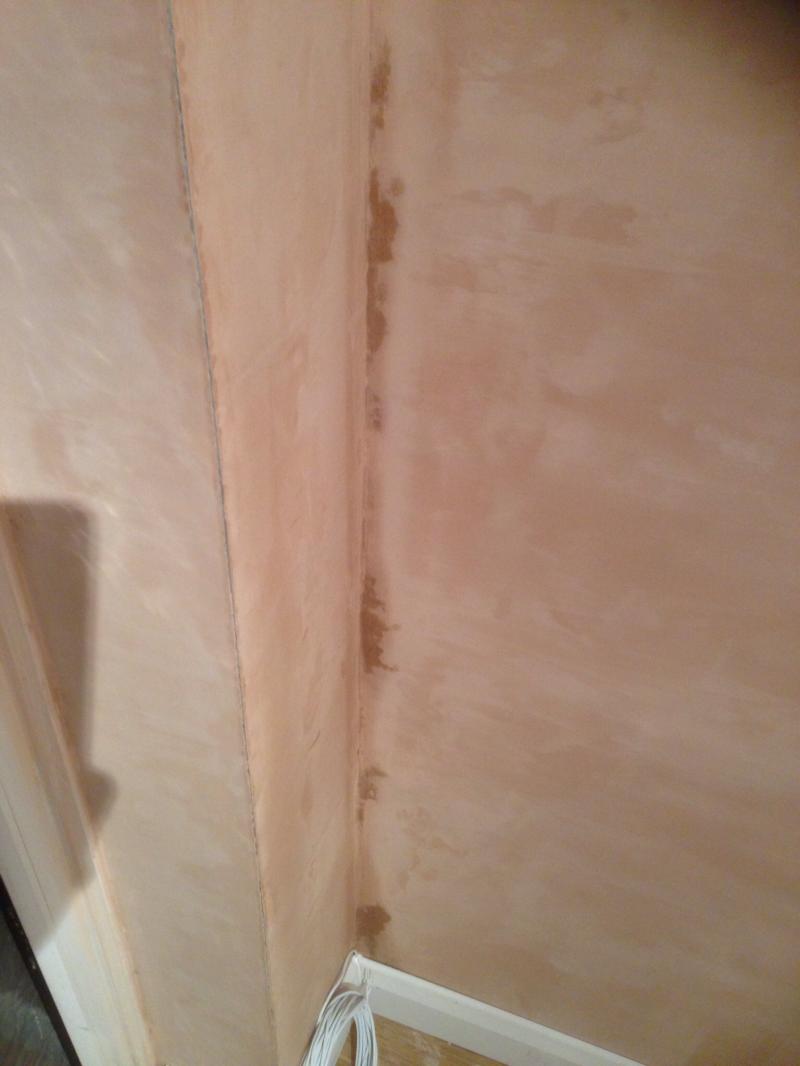Hi.
Someone may have seen this before.
I did some plastering last week and the skim seems mostly dry except for some strange small damp patches just in the corner.
And a bit closer
Underneath -
I replaced a wood & glass partition between the hall and the lounge and built a wall with thermalites blocks.
The bulk of the area on the right was dry lined with d&d plasterboard, leaving just a small strip about 4" wide up against the corner. (Where the damp is).
This was filled with bonding and the whole wall skimmed with multi finish.
The bonding went on last weekend and the skim on tues eve.
There's no plumbing anywhere near and there was no obvious problem in the corner before.
I'll leave it a bit longer to see if it clears, but the damp looks localised but very pronounced.
Any ideas?
Someone may have seen this before.
I did some plastering last week and the skim seems mostly dry except for some strange small damp patches just in the corner.
And a bit closer
Underneath -
I replaced a wood & glass partition between the hall and the lounge and built a wall with thermalites blocks.
The bulk of the area on the right was dry lined with d&d plasterboard, leaving just a small strip about 4" wide up against the corner. (Where the damp is).
This was filled with bonding and the whole wall skimmed with multi finish.
The bonding went on last weekend and the skim on tues eve.
There's no plumbing anywhere near and there was no obvious problem in the corner before.
I'll leave it a bit longer to see if it clears, but the damp looks localised but very pronounced.
Any ideas?




